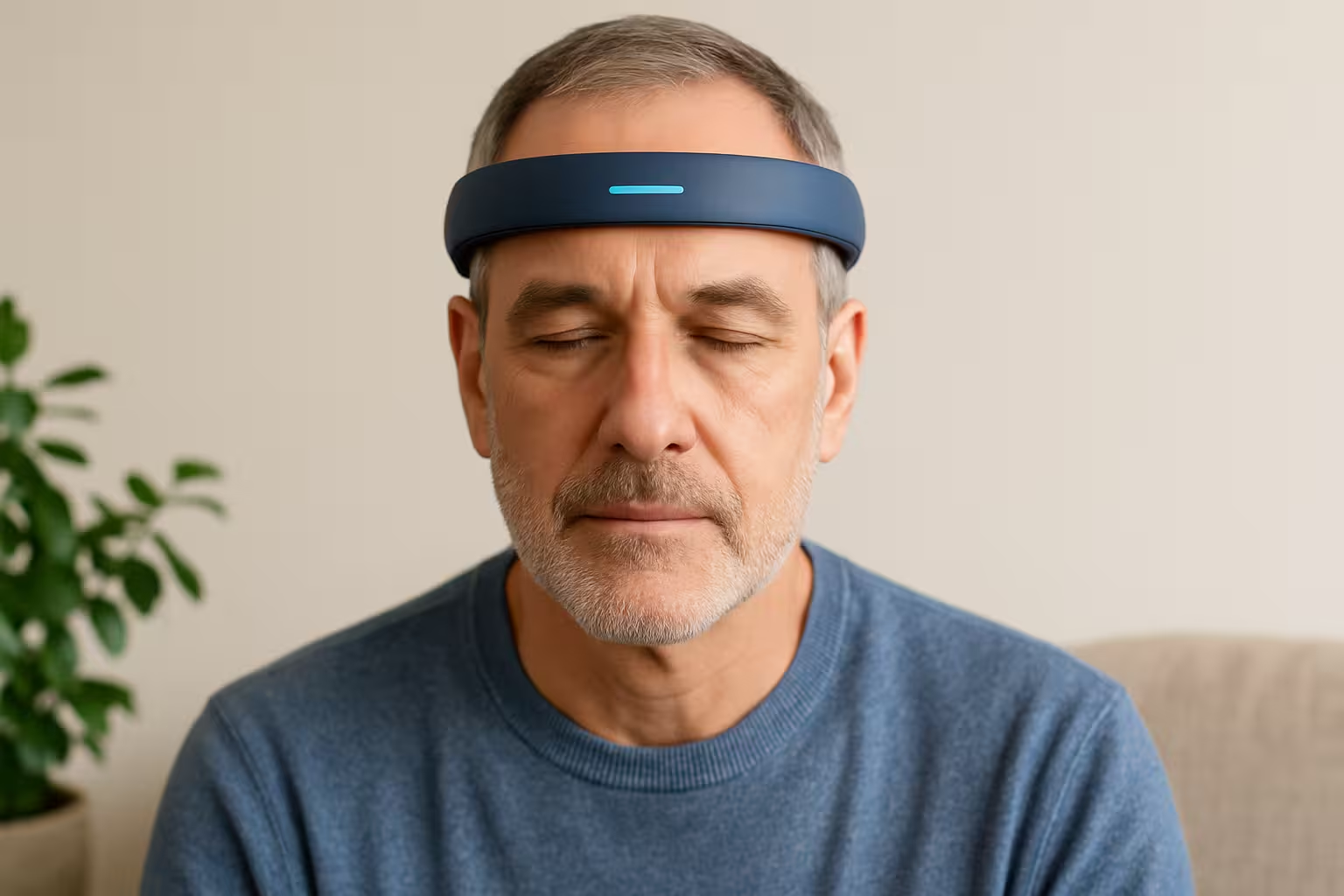Muse EEG Headband: Definitive Bio-Hacker's Review
The Muse headband is the flagship consumer device in the neurofeedback market, leveraging EEG (Electroencephalography) to measure brain activity and provide real-time guidance. Unlike passive trackers, Muse is a genuine skill-building tool, designed to train the brain to enter and maintain a calm, meditative state. This definitive review provides an analytical deep dive, spanning the device's technological core, long-term usability friction, and a critical analysis of its scientific efficacy against its competition, ensuring you know exactly what you're buying.
Key Highlights (The Good)
- Measurable Skill Acquisition: The core neurofeedback loop effectively teaches users how to self-regulate their brain state, with results that transfer to non-device use.
- Advanced Biosensing: Monitors not just EEG, but also Heart Rate Variability (HRV), respiration, and body movement, providing comprehensive biometric data.
- Superior Sleep Tracking (Muse S): The flexible, comfortable form factor and EEG-driven sleep stage analysis offer a more qualitative assessment of sleep architecture than wrist-worn devices.
- Digital Sleeping Pills (DSPs): Highly effective guided audio to actively pull users into sleep, making it a powerful tool for addressing sleep onset insomnia.
Key Drawbacks (The Bad)
- High Sensor Adherence Friction: Achieving 'Good' signal quality across all dry electrodes can be frustrating, often requiring multiple adjustments, which can derail quick meditation sessions.
- Cost and Subscription Model: The hardware is expensive, and essential features (like deep dive data analysis and guided content) are locked behind a mandatory, recurring subscription (Muse Premium).
- Not Optimized for Active Focus: While excellent for passive, restorative calm, its core neurofeedback design is less suited than some competitors for training high-performance, active focus required for cognitive tasks.
What is the Muse Headband and How Does it Work?
The Muse system operates by capturing Electroencephalography (EEG) signals from multiple dry electrodes: two on the forehead (measuring the prefrontal cortex) and additional sensors behind the ears (acting as reference points and measuring temporal/occipital activity). This multi-channel approach provides richer brainwave data than simpler, single-channel devices.
The Core Neurofeedback Loop: Real-Time Auditory Cues
The device is designed to isolate and track key brainwave frequencies that correlate with mental states:
- Alpha Waves: Associated with calm, relaxed awareness.
- Theta Waves: Associated with deep relaxation, light sleep, and the border between conscious and subconscious.
- Beta/Gamma Waves: Associated with concentration, active thinking, and anxiety (higher frequency).
In-Depth Analysis: Scientific Validation, Comparative Efficacy, and Value
This section would normally contain a deep dive into the scientific literature and market data. For this demo, we've omitted the dynamic loading to keep the example simple. In a real scenario, this is where the detailed analysis of efficacy, competitor comparisons, and value for money would be presented.
Final Verdict and Recommendation
The Muse EEG headband is arguably the most effective and user-friendly consumer neurofeedback device for meditation depth and stress reduction. While the hardware cost and required subscription are notable barriers, the measurable long-term skill acquisition it provides—the ability to find and hold a calm state without relying on the app—justifies the investment for serious bio-hackers, meditators, and those struggling with chronic anxiety. For those focused specifically on improving sleep onset, the flexible form factor and Digital Sleeping Pills of the Muse S make it a specialized, compelling tool.
Verdict: Highly Recommended for users prioritizing mental restoration and meditation mastery.

